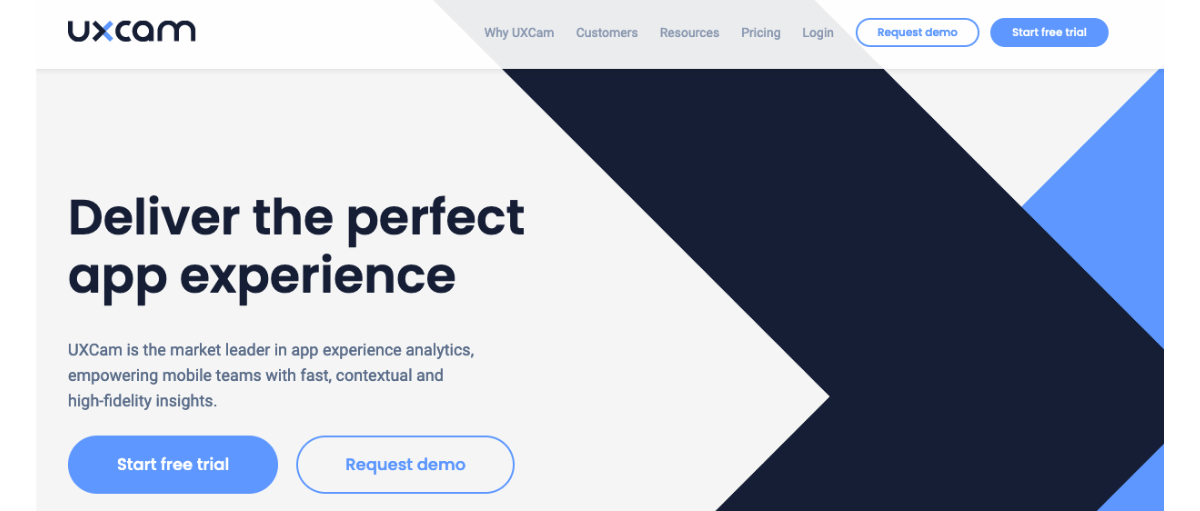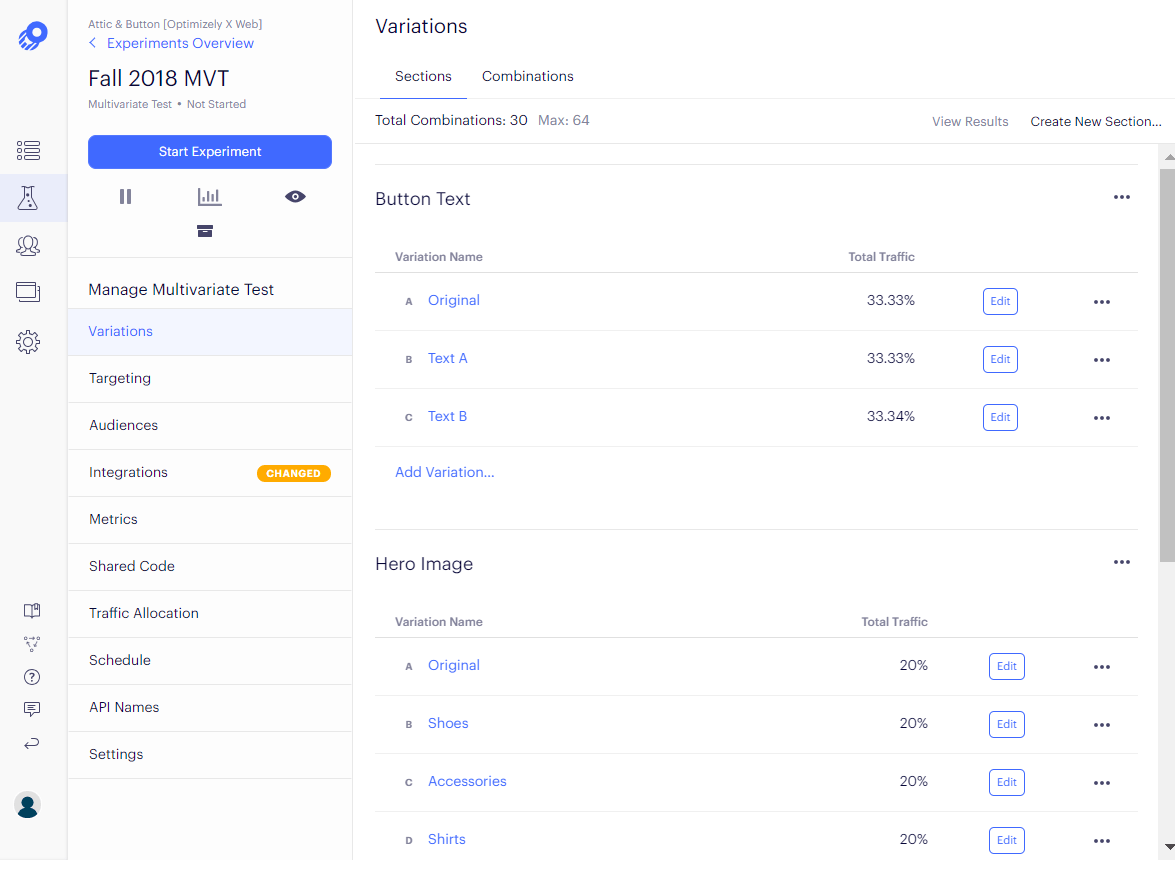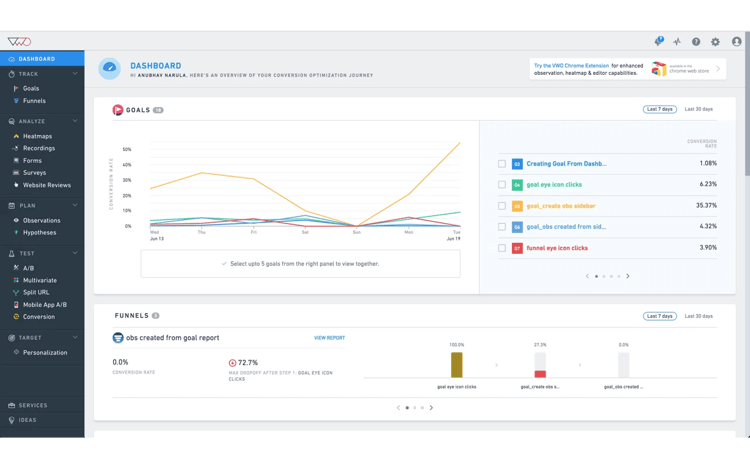A/B testing is an effective process of running experiments of various versions of a mobile app in order to analyze how users interact with them. A/B testing tools help marketers and app developers improve key metrics, such as engagement or in-app purchases as well as to launch new features safely, minimizing the risk of losing users at a larger scale.
With a growing, competitive app market, you need to make sure your mobile app is always optimized and up-to-date with the newest features. Not only do you want to keep up with the current technology that other mobile apps are using, but you also want to fix and resolve any issues users have brought up, as it can have a huge impact on conversion rates and user retention.
A/B testing tools provide insights into user experience and app performance, allowing app marketers to understand how their campaigns and products are performing. In this guide, we will discuss everything you need to know about mobile A/B testing, its best practices and features, and the top A/B testing tools that will ensure optimal results so that your mobile app stands out in the crowd.
What is A/B testing for mobile apps?
App A/B testing and optimization services typically work across a number of areas in the app funnel, including app store pages, in-app user flows and revenue analytics. They can be provided as part of app analytics tools, app engagement or CRM suite, or as specialist standalone app A/B testing tools.
The process of app A/B testing usually consists of running tests for different user experiences. App users are categorized into various segments, with each group being presented with a different app layout and format. This way, developers and marketers are able to identify which version generates higher conversions and, therefore, best suitable for the long-term success of the mobile app.
To better illustrate what A/B testing tools do, let us imagine a mobile game app that includes in-app purchases for each level a player enters. The app developer then runs tests on the different banners to check which ones receive the most clicks and how players interact with them.
Through the concept of A/B testing, it is then revealed which in-app banners performed best, allowing developers to know which preferred format to roll out, and launch the final version to all app users. This way business owners can be sure their app is fully optimized, increasing user acquisition and retention as well as conversion rates.
To break things down, A/B testing tools for mobile apps include the following features:
- Testing app performance on various OS versions (e.g. iOS 18.2)
- Testing app design and appearance in different layout models
- Testing various capabilities when operating on specific settings
- Testing the graphics-based operating system interface (GUI)
- Testing interaction and functionality with icons, menus, navigation buttons, erc.
Types of mobile apps for A/B testing
Starting from the top level, mobile apps usually come in three formats – web app, native app and hybrid app, all of which include different display and viewing modes, and user experiences.
Mobile web apps are directly viewed through browsers on mobile devices with a web display. They can operate on any mobile operating system and device. On the other hand, native apps are specifically designed for mobile devices, using certain SDKs, ensuring a more reliable and responsive system with intuitive user navigation.
Hybrid apps nicely combine native and mobile web apps that are launched in native settings. Mixing web technologies and native APIs, the hybrid format is more economical and has a speedy development process compared to native apps.
With the main mobile app categories defined, understanding how the types of A/B methods work should be more comprehensive to determine which one would be most suitable for the kind of mobile app you are or have developed. So, let’s dive into them.
Mobile App Analytics Buyer's Guide
Download our Mobile App Analytics Buyer’s Guide to learn about the best app analytics tools in the space to use for your app business. Also, learn why you need to use app analytics tools, types of tools, how to choose and use one.
How does mobile A/B testing work?
First and foremost, you need to establish what you are going to test within your mobile app, especially whether it is going to be an on-site or off-site test.
Off-site tests usually include testing ads or sales email. You can run trials on how your ad copy drives conversions, for example, to tweak and improve your advertising strategies. You will then be able to spend your ad budget wisely, reducing the risk of losing any financial resources.
Testing sales emails involves a similar approach, where marketers send out two versions to their list, with one being sent to half of the list and the second to the other half. You will be able to see which one performs and converts best, or what needs to be improved in terms of copy structure, subject line, and any promotional offers.
In-app A/B testing
On-site tests focus on the app’s UX and UI, and how they impact certain metrics, such as session time, retention rate, bounce rate, engagements and interactions as well as lifetime value (LTV). And of course, there are other metrics that will be significant to developers depending on the unique functions of the app.
A/B testing tool example
Source: UX Cam
With in-app A/B testing, you also want to consider all of the sales-related components of your app, like headlines, calls to action (its copy, font, icon and location on the page), pop ups, featured images and copy.
Marketing campaign A/B testing
A/B testing tools can benefit app marketers to optimize marketing campaigns as well, understanding which ad creatives and ad channels work best, or what type of push notification re-engages churned users most likely.
Conducting A/B testing for marketing campaigns can also help maximize and enhance conversion rates, boost installs, and retarget and retain users.
A/B testing involves a cyclical process that you can undergo continuously in order to keep optimizing your app and campaigns. Therefore, there are some foundational steps that belong to the usual process, and so you want to ensure the A/B testing tools you choose will include these.
Define your variables
The first step is also to develop a hypothesis and define your variable in order to identify what you want to test. You can start by outlining a problem you want to resolve, or an app feature you are unsure of, for example. This will make a good starting point to attempt to solve the issue at hand.
A data-backed hypothesis can be: ‘adding a CTA button in the center of the landing page will increase conversion rates by 10%.’
If you don’t have a clear variable, make sure to review any data your mobile app currently has to help you define one. It is also best to test only one or two variables at a time, otherwise it will be a lot more challenging to spot loopholes amongst multiple variables within your campaign performance.
Segment your users
A/B testing is usually performed on users of the product being tested. So it is ideal to segment them into sample groups to test one format against the other, expose them each to different variations and see how the two groups respond.
Make sure to include an adequate number of users in your experiment to reduce the risk of misinterpreting results and disguising optimization opportunities with a minimized test group. Larger sample sizes allow you to open up your findings to a diversity of users.
After defining your variables and hypothesis, and segmenting your users into sample groups, there are several methods of A/B testing you can choose from to get the most out of your experiment.
Split testing
In split testing, you have two opposing variables. For example, you test a complete new version against the existing landing page to analyze which one performs better. Split testing is ideal when you want to implement a whole new web design or copy without getting rid of the original and the new one not performing too well after all.
Multivariate testing
Multivariate A/B testing (MVT) is a method that requires testing several page variables at the same time, with the goal being to identify which variable is most interacted with.
MVT example
Source: Optimizely
This method can be more complicated and results can be complex to analyze, as you need to create several versions of your landing page and choose the best one. This form of A/B testing is therefore ideal for advanced marketing and app developers that are working on a larger project.
Multi-page testing
The multi-page testing method tests particular elements of a page, for example, the CTA button, headline, navigation bar or pop-ups across multiple pages. The changes of the element can be based on the placement, font, size, and/or color.
Analyze results, improve, repeat
Once you have retrieved data and results from your sample, using your chosen A/B testing method, you can understand which version worked better for your mobile app. Accordingly, you can make improvements and adjustments with confidence, knowing that the changes will have a positive impact on the overriding success of your mobile app.
A/B testing dashboard example
Source: VWO
The great thing about A/B testing is that it encourages developers and marketers to keep testing their products and defining new hypotheses to boost the quality and conversion rates. A/B testing is a continuous concept in which you review data and create new ways to make your product more appealing to new and existing customers.
A/B testing tools can benefit mobile apps on multiple levels. So, let us dive into why A/B testing is so important and what advantages it has for business owners.
Why is mobile A/B testing important?
When done right, A/B testing can make a huge difference in your ROI with accurate and controlled tests that will ensure insightful results into the best marketing strategies for your mobile app.
Without putting your business in financial risk, A/B testing tools allow you to be sure the variation you are running experiments on will be successful once it officially goes live. A/B testing can therefore substantially improve the quality and long-jevity of your product with changes that have been thoroughly tested.
Here is a list of the core benefits of A/B testing, and the main reasons why it is important for your business:
-
- A greater understanding your users, their personas and behavior
- Higher CTR and conversion rates
- Keeping up with market trends
- Reducing bounce rates
- Optimizing in-app engagements
- Improving KPIs
- Safely integrating new features
Ultimately, A/B testing tools give app marketers the advantage of not having to guess and assume what users may or may not like, but instead, they have the opportunity to retrieve realistic data that they can rely on when implementing new features.
Based on how the test groups interact and engage with your variables, you can make an informed and confident decision to further optimize your app’s conversion funnel. For this very reason, top established companies like Facebook, Amazon and Google continuously run A/B tests in their mobile apps for enhanced, personalized user experience and optimized conversion rates.
Working with A/B testing tools will help you make changes directly to your mobile app, even after it has been officially published to the app stores. This means the tweaked and improved versions do not have to go through the app review process over and over again, allowing you to keep up with the evolving dynamic of the app market, and keeping your content and app features fresh and accurate.
A/B testing tools – best practices & features
Now that we have laid out the usual process of A/B testing and what benefits it can have for mobile apps, it is safe to assume that A/B testing tools can significantly enhance conversion generation and app engagement efforts.
Before choosing mobile app A/B testing tools to work with from our list below, let us summarize the best practices and features of A/B testing, along with tips on what to look out for when selecting A/B test software.
- Have a clear hypothesis of what you want to test
- Prepare for unexpected results
- Inconclusive results are still results
- Test in different seasons – seasonality trends are highly influential
- Allow your test to run its course before rushing to conclusions
- Test elements that impact conversions and UX
A/B testing should become your best friend after developing and launching your mobile app. It allows you to see which ads drive the most conversions, which feature buttons get the most engagement, or what blog content gains the most traction.
Marketers and business owners should take advantage of this concept, as it will keep up their mobile apps with the current trend in the app market, tailoring their product to each and every need of their target users.
If you are looking for efficient and bespoke A/B testing tools, take a look at our list we have compiled for you below with the top A/B testing tools for mobile apps.














